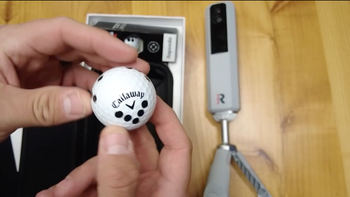What counts as a decent 9-hole score completely depends on where you're at with your game right now. For newcomers, anything under 60 strokes shows you're making real progress, and intermediate players typically aim for somewhere between 40-50 shots. Listen up, though standard par runs 36, but that shouldn't freak you out! The majority of weekend warriors card around 45, which signifies respectable bogey play. Begin by checking your current short game skills and ball-striking consistency, then create attainable goals from your present abilities instead of shooting for impossible standards that'll only frustrate you.
Table of Contents
Getting a Handle on Par and Typical 9-Hole Scores
Your initial trip to a 9-hole layout needs you to grasp what par means; it's basically your scorecard GPS showing if you're playing well. A standard 9-hole par adds up to 36 shots, mixing together par 3s, 4s, and 5s determined by how long and tough each hole plays. Here's what matters:s matching par represents outstanding golf that seasoned players still get excited about!
Let's get real about what you should expect. Your typical adult golfer cards about 45 over nine holes, which signifies one bogey per hole. Starting out and shooting near 54? Totally fine! Regular players usually fall somewhere in that 40-50 stroke window. Better players target scores around par or below, and single-digit handicappers often post low 40s. Want to join the elite crowd? Regularly breaking 80 over 18 holes shows serious game and commitment. Keep in mind that tough courses and nasty weather will definitely affect your totals.
A solid scorecard system lets you monitor improvements and spot weaknesses while you chase those goal scores.

Figuring Out Your Starting Point and Ability Level
You've got to know your actual skill level before tracking any scores. It's basically like checking your weight before going on a diet; you can't fix what you haven't measured!
Begin with basic putting drills. Set up at 5, 10, and 15 feet, then roll ten balls from each spot and add up your makes. After that, test your full shots by striking twenty range balls and counting how many fly toward your target. Also,o gauge your mental strength, score your confidence and concentration from 1-10 while doing these drills.
This honest self-check reveals your baseline and shows if you're battling swing issues, mental games, or strategy problems. Want a deeper understanding? Book a lesson with a launch monitor tech that tracks your ball flight numbers precisely. Quality instruction emphasizes checking your swing process and mechanics, not just whether the ball goes in.
Creating Score Targets That Match Your Experience
You've checked your skills, so let's build scoring goals that'll energize you rather than drain you. Your ability dictates sensible targets. Beginners should aim for sub-60 rounds on nine. Sounds like a lot? Actually, that's pretty darn good for starters! Regular players usually post between 37-45, so hitting that zone means you're playing solidly. Seasoned golfers can hunt for par (36) or lower now, you're cooking! Steady play beats occasional brilliance. Rather than chasing that one remarkable score, work on regularly achieving your goal range. Cracking 40 marks is a huge achievement for many players, and steady par-level scoring means you've got serious skills. Female golfers often average 45-50, giving you a useful measuring stick for personal targets. Course difficulty changes everything, so stay positive when your home track plays meaner than others.
What Influences Your 9-Hole Results
Your scorecard reflects way more than just your swing; lots of variables either help your game or send those numbers through the roof. Weather's the biggest pain,n gusts can wreck a perfect approach shot, and wet conditions make those putting surfaces sketchy. Layout matters big time. Tight driving zones and nasty bunkers easily push your 42 into the 50s. Get this: gear makes a bigger difference than most think. Properly fitted clubs might save you 3-5 shots per nine, but mismatched equipment hurts both distance and accuracy. Lighting conditions matter too; evening shadows turn simple putts into guessing games, creating unnecessary three-jacks. Nine-hole golf keeps getting more popular as busy players find ways to squeeze in competitive rounds despite packed schedules. The new handicap rules require finishing every hole for your round to count, ditching the old system where you could submit incomplete scores.

Monitoring Your Improvements Through Multiple Outings
After playing several times, recording your results becomes the secret sauce separating players who get better from those stuck in place. You'll need deeper stats than just your final number to really advance.
Begin logging essential numbers including driving accuracy and green hits. Programs such as Golf Pad GPS save your playing history automatically, revealing patterns quickly. Say you're finding 4 of 7 fairways regularly now you understand what needs attention.
Build basic charts showing your past five outings seeing the numbers visually reveals if you're truly progressing or just getting lucky! Numbers tell the truth. Lots of players enjoy adding up scores every three holes, keeping their math cleaner and more precise during play. Want deeper stats? Try recording every shot with club choices and ball positions for complete distance and precision data.
Understanding Course Ratings and Score Expectations
Recording scores helps, but grasping course difficulty totally shifts how you create fair goals and track progress. Not every layout plays similarly tough, which explains why Course and Slope Ratings exist.
Course Rating shows how challenging a track plays for expert golfers. That par-36 nine-holer could rate 34.5 when it's friendlier or 37.2 when it's brutal. Slope Rating, spanning 55-155, reveals how much tougher average players find it versus experts.
Playing somewhere rated 140 Slope compared to 110? You'll need adjusted expectations! That bigger number means adding extra shots makes sense.
Building Steady Scores on 9-Hole Layouts
Consistent play trumps occasional brilliance when you're working toward predictable nine-hole totals. Pick smarter clubs instead of automatically grabbing the driver. Check this out: teeing off with irons improves control, even losing 20-30 yards means nothing.
Aim at green centers rather than attacking tucked flags with trouble. This approach easily drops 2-3 shots each outing! Create a consistent pre-shot process for staying calm when it counts, perhaps two rehearsals plus one calming breath.
Focus on your short shots constantly. Chip and putt practice drops scores quicker than crushing drives. Think "no doubles" instead of expecting birdies everywhere.
Measuring Yourself Against Common Standards
Understanding your position versus fellow golfers lets you create fair goals and appreciate real improvements. Tour pros usually need 34-36 shots over nine, and top amateurs frequently beat par by 1-3. Relax, they're not your competition! Single-digit players (0-9 handicaps) normally post high 30s through low 40s, making sub-40 really strong. Middle handicappers (10-18) aim for mid-40s, where beating 45 looks great. Typical golfers often shoot 40-45, running 4-9 above par. Beginners hitting around 54? You're doing fine! Breaking 60 works perfectly when you're learning. Remember: these standards provide achievable goals without extreme pressure.

Developing Abilities to Hit Your Score Goals
After setting those benchmark-based targets, let's develop the exact abilities that'll help you reach them. Begin recording your carry distances; most weekend players pick too little club, ruining birdie chances. Prioritize hitting greens first because it beats depending on scrambling every time.
Listen up: your wedge game requires major work. Record scrambling stats by wedge type to identify your best options. You'll likely find lower-lofted shots work surprisingly well. Try your gap wedge more often instead of automatically pulling that lob!
Record individual hole results each round. This numbers-based method improves your choices and reveals precisely where shots disappear.
Frequently Asked Questions
Do I Include Penalties When Scoring My 9 Holes?
You bet you include penalties when adding up your 9-hole total! Listen—penalties reflect your real play and belong in your gross score. The handicap system demands this for correct calculations. From water balls to OB shots, each penalty adds to your posted total.
What About Playing With Winter Rules?
Winter conditions change your formal 9-hole totals, though they're meant to help! Your rounds remain postable when there's just one temporary putting surface out there. You'll receive free drops from plugged shots in fairways and first cuts without penalties. Here's the deal - winter conditions make play simpler while your scores stay legitimate for handicapping.
Is It OK to Score With Phone Apps While Playing?
Absolutely use phone apps for keeping score during rounds! Programs including DECADE Golf and Arccos deliver live scoring, yardages, and shot recording. They'll calculate your index, save playing records, and show thorough analytics. These apps run on iPhones and Androids, perfect for real-time tracking and later review.
Will Team Formats Like Scrambles Help My Regular Game?
Each format enhances your solo play differently! Scrambles remove stress, letting you work on particular shots without score worries. You'll build confidence attempting bold shots. Best ball keeps personal scores while adding teammate backup. What's the payoff? You'll develop strategy and management abilities that carry over to individual play.
Is Playing Different Tees Smart for Setting Goals?
You should absolutely test multiple tee boxes for goal setting! Moving forward sometimes creates more risk and bigger numbers, but back tees could encourage safer shots. Play your regular track from front, middle, and tips across multiple rounds. Note your totals and reveal which setup delivers your strongest scores and maximum fun.
Conclusion
You're ready to establish your ideal 9-hole target and make it happen! Your goal needs to push without crushing you, perhaps cracking 50, or steady low-40s rounds. Record each outing, enjoy minor victories, and shake off rough patches. Golf rewards patience, not rushing. Keep grinding, stay focused, and watch those totals gradually fall where you want them.





